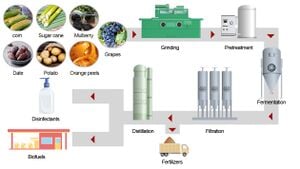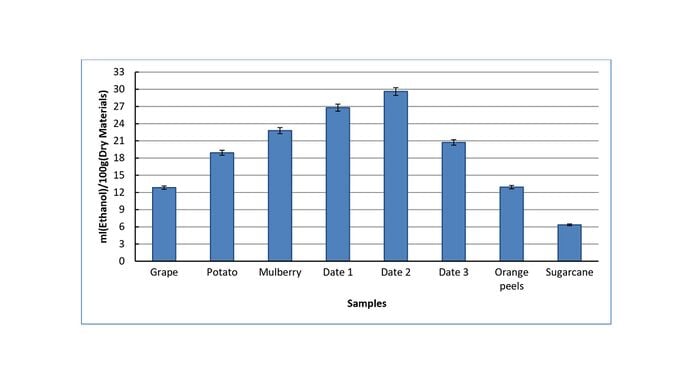
Abstract[edit | edit source]
Drastic increment in energy demand in the current century motivates humans to extract fuel from new sources. Renewable energies such as biofuels are the most prominent targets to subside fossil fuel dependency for countries. Utilizing biofuels takes countries to the safe side regarding oil price fluctuating, air pollutions, and fossil fuel depletion. Among the threats of applying fossil fuels, outdoor pollution, causing more than 4.2 million deaths annually, motivates the idea of finding alternative fuels. Among different types of biofuels, bioethanol is more common due to source variety and its ability to blend with fossil fuels in commercial vehicles. Although it has a lower energy content than gasoline, its octane number is higher, which preserves the motor from knocking in the condition of high pressure. Further, higher oxygen content and non-toxic combustion products lower air pollution.
Extracting fuels from crop wastes or as a by-product during the food processing of agricultural products is so promising to achieve sustainable energy development. This is widely disposed of through the world during the harvest, packing, and transportation. In many countries, agricultural waste is considerably weighty. Nonetheless, most of that is used for animal feed or herbal fertilizer and no useful value is added. Despite its location in an arid region, Iran produces various citrus, cereals, and vegetables in high tonnage. The waste of the agricultural product, especially those disposed of by the food processing industries, such as fruit juice factories, remains also useless. The potential of the residues to extract biofuel is investigated in the current experimental study.
Materials, Method and Results[edit | edit source]
Six samples of abundant agricultural products in Iran are chosen: sugarcane, grape, potato, orange peel, date, and mulberry. The processes of pretreatment, hydrolysis, and fermentation are performed and the extracted juice is directed to the distiller to gather bioethanol. To evaluate the distilled juice purity, a gas chromatography test is carried out. It is shown that date and mulberry can produce a maximum of 29.5 and 23 ml (ethanol)/100 g (dry waste) as the most efficient agricultural products. The figure below shows the amount of bioethanol extracted from each and every six waste materials.

Conclusions[edit | edit source]
The waste of agricultural products, which is heavy in many countries due to wide food processing industries, can be considered as a promising energy source. Bioethanol is an applicable fuel in cars, in absolute or blended form. This can be produced by the agricultural residues, as studied experimentally in this work for Iran. The samples of many products in Iran, including sugarcane, potato, date, grape, orange peel, and mulberry, were gathered and the processes of pretreatment, hydrolysis, and fermentation were applied to them. The extracted juice was evaporated and condensed in the distiller to obtain the bioethanol. All samples showed an acceptable continent of ethanol. Bushehr date (29.5 ml (ethanol)/100 g (dry waste)), Jiroft date (27 ml (ethanol)/100 g (dry waste)), and mulberry (23 ml (ethanol)/100 g (dry waste)) were shown to be the most efficient products. The bioethanol production should be improved by optimizing the parameters involving the pretreatment and fermentation processes, which can be the subject of future study. Another type of fermentation process which can be more effective such as applying organic acids like formic, acetic, maleic, citric, and tartaric acid can be also considered as another development on the current work for future works. Further, many other agricultural wastes such as cereals stalk can be examined as the source of bioethanol production in Iran. The current study showed that the biofuel industries should be set up and developed in Iran, ensuring energy saving and alleviating air pollution. This scheme could be potentially lucrative and beneficial for everybody who invests in this industry.
Source[edit | edit source]
- Taherzadeh Fini, A, Fattahi, A, “Bioethanol Production from Wastes : An Experimental Evaluating Study for Iran”, Journal of Renewable Energy and Environment, Vol. 8, No. 3, (2021), 86-93. https://doi.org/10.30501/jree.2021.255487.1156